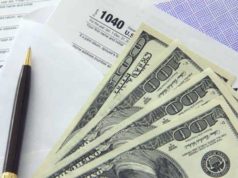
That statistics regarding IRS tax evasion demonstrate the large number of people who attempt to defraud the Internal Revenue Service as well as the federal government. These people are often investigated by field examiners of the Internal Revenue Service in order to collect back taxes and impose tax evasion charges on those who have committed tax evasion. The tax evasion charges that are filed against those who have committed IRS tax evasion are compliant with the Internal Revenue Code as well as other state and federal tax evasion laws.
One of the major issues that the Internal Revenue Service and the federal government faces in regard to IRS tax evasion and balancing the federal budget is the "tax gap". In 2005, it was estimated that the United States has a tax deficit of approximately $345 billion that it will never collect. Efforts have been made to close this gap but only a small percentage, roughly ten percent, has been received by the Internal Revenue Service since this information was made available.
This ten percent was collected through tax evasion charges imposed by field examiners and other agencies. However, as the problem has not been resolved, the tax gap continues to grow and billions of dollars continue to remain uncollected due to IRS tax evasion.
The Internal Revenue Service and other financial analysts for a time believed that the growth of the GDP would help to close the tax gap. The GDP is the nation's gross domestic product and it is calculated through measuring a nation's overall economic output. The equation for calculating GDP is C + Inv + G + (eX – i) or private consumption + gross investment + government spending + (exports – imports).
The belief was that the growth of the GDP plus increased tax collection and tax evasion charges would close the tax gap in a few brief years. However, as of late this has not proven true as the Internal Revenue Service indicates that billions of dollars will never be collected due to IRS tax evasion.
Another factor that shows the extent of IRS tax evasion is the estimates that show approximately $30 billion annually will never be collected in federal income tax returns. However, if the Internal Revenue Service investigates a number of cases, it may receive approximately $2.2 billion from imposing tax evasion charges. While this is a step towards closing the gap, that still leaves $28 billion unaccounted for.
The reason for this disparity is a lack of resources for the Internal Revenue Service. Between 1992 and 2002, the Internal Revenue Service witnessed a 28 percent decline in its field examiners due to cutbacks in the federal budget while the workload for cases that required investigation increased 16 percent. The incapability of the Internal Revenue Service to investigate each case allows for the tax gap to grow and IRS tax evasion to go unpunished.
Despite these numbers, a small percentage of cases are brought before the courts in penalize and punish the perpetrators of IRS tax evasion. These cases are largely high profile cases in which the defendant has a high income and the tax evasion charges filed show that he or she owes a substantial amount of money in back taxes.
























